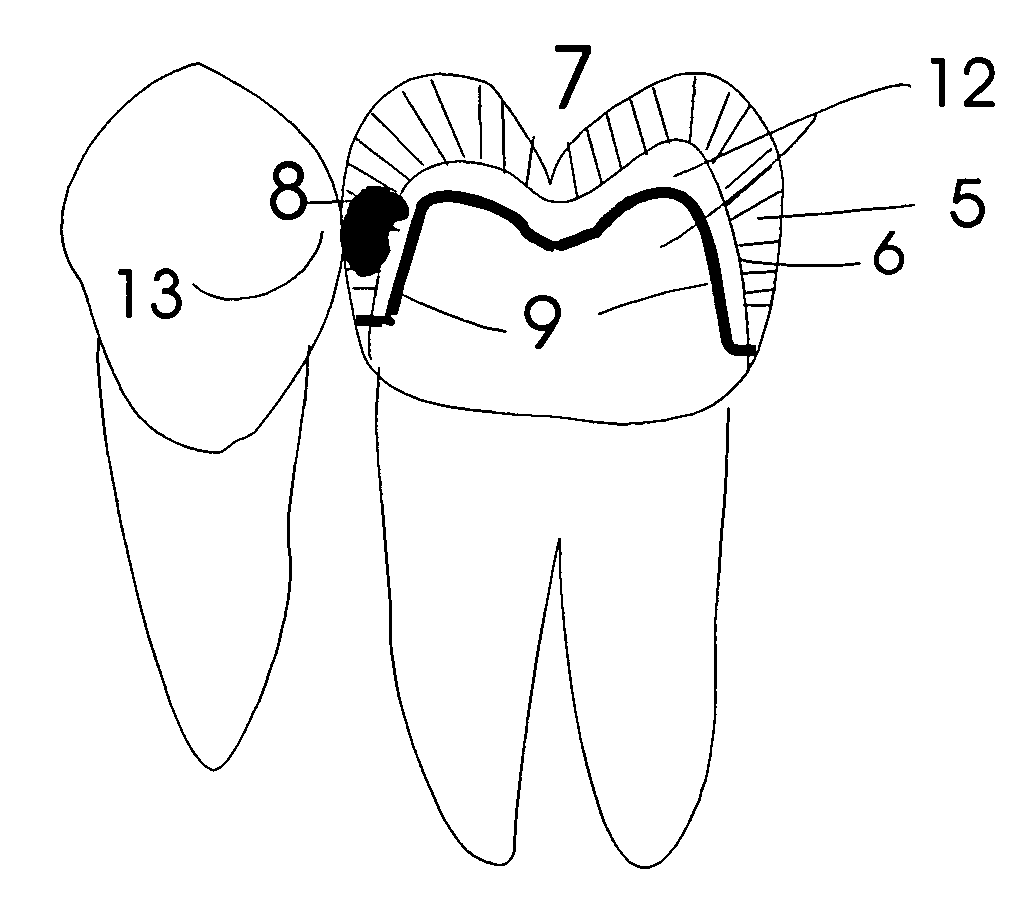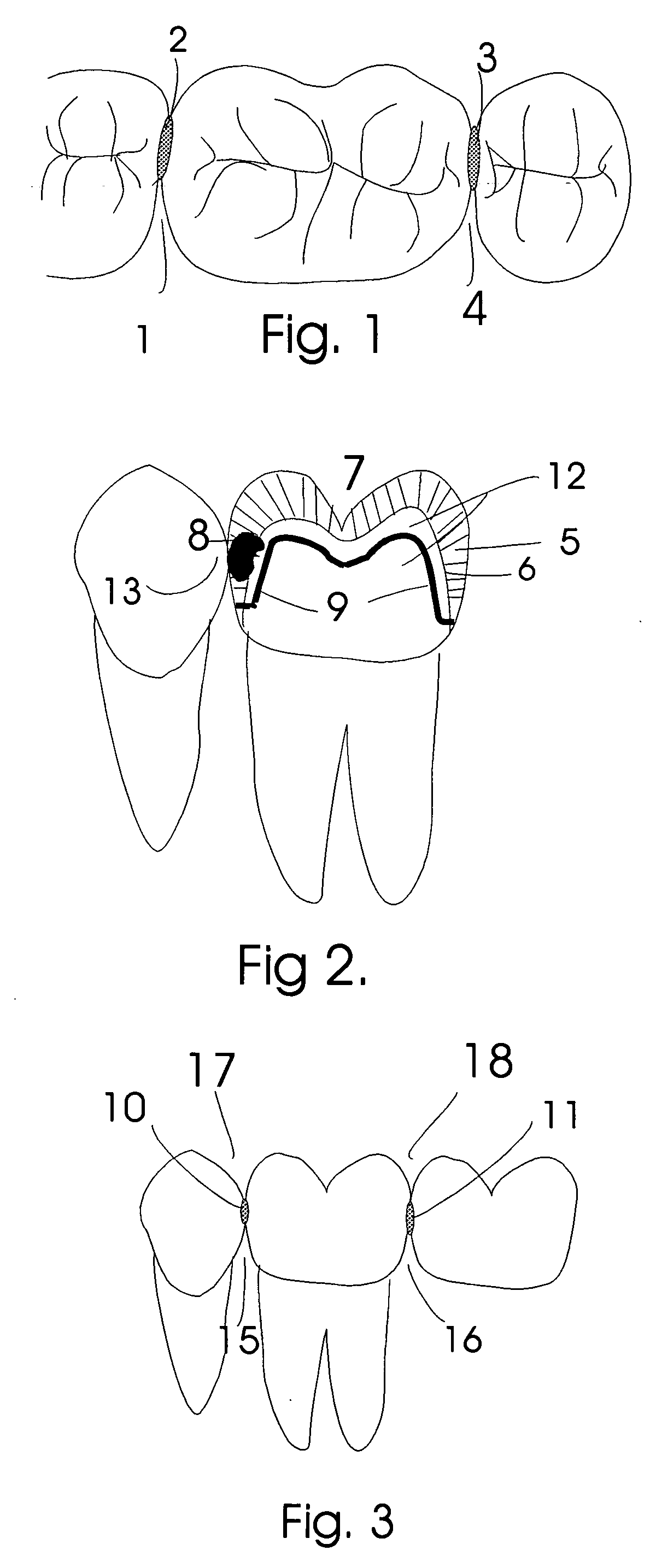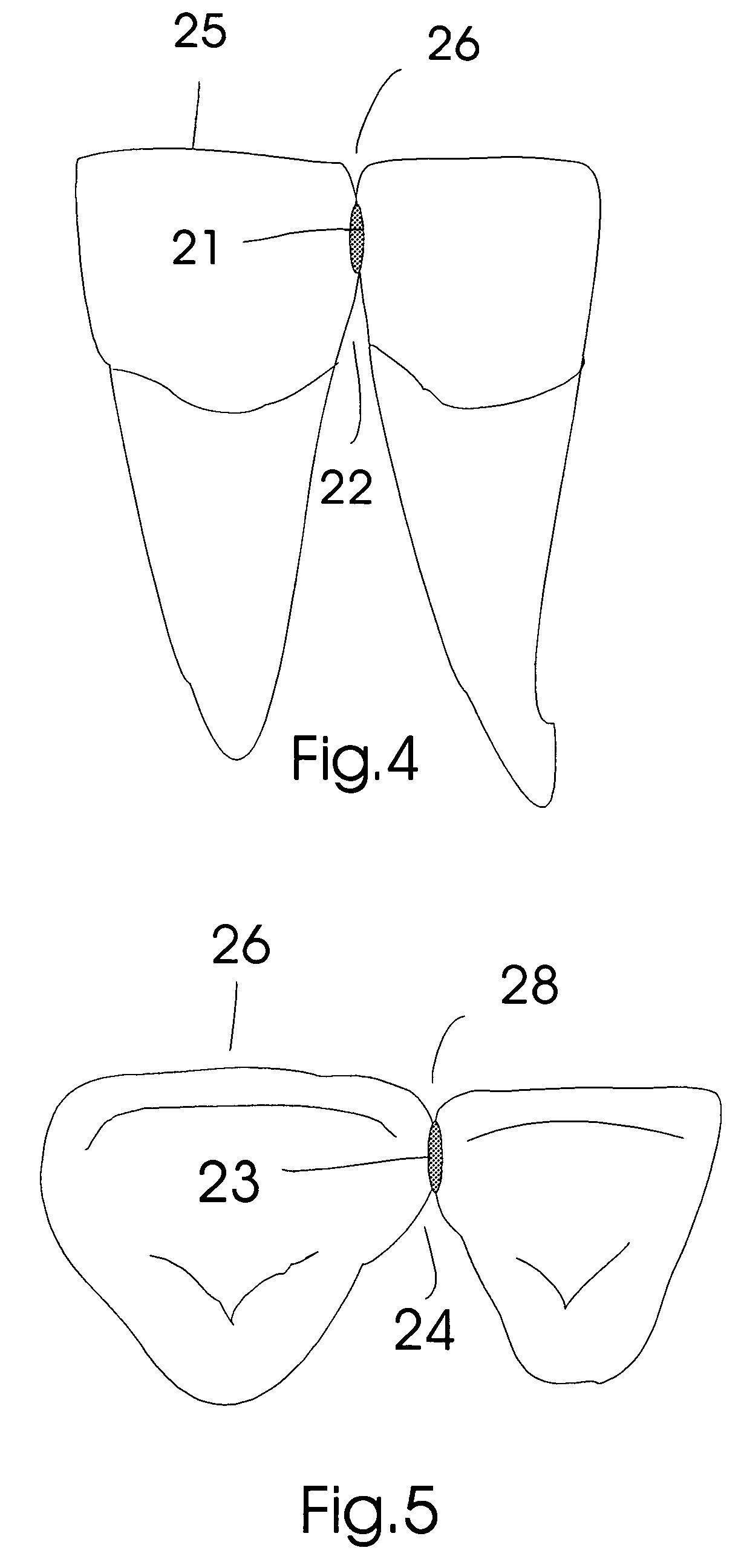Dental insert and method of tooth restoration
a technology of inserts and teeth, applied in dentistry, medical science, teeth capping, etc., can solve the problems of difficult packing of resins, inability to create good proximal contact, and gaps that are too wide to allow for good proximal contact, etc., to achieve convenient handling and placement, easy sterilization, and convenient individual packaging
- Summary
- Abstract
- Description
- Claims
- Application Information
AI Technical Summary
Benefits of technology
Problems solved by technology
Method used
Image
Examples
Embodiment Construction
[0056]FIG. 1. demonstrates the position and contour of the interproximal contacts as viewed from the top or occlusal aspect. Note how they are located buccal to the middle of the tooth and therefore creates a more prominent lingual embrasure 1, 4, and a less prominent buccal embrasure 14. 1 refers to the distal lingual embrasure. 4 refers to the mesial lingual embrasure. 2 is the distal occlusal contact area and 3 is the mesial occlusal contact area. The preferred embodiment of the dental insert (s)(not shown but seen in FIG. 6. will be placed into the proximal box (s) to coincide with the anatomical proximal contact area of the tooth to be restored.
[0057]FIG. 2. demonstrates the anatomy and position of most interproximal decay as it relates to the anatomy of a tooth. 8 refers to caries penetrating enamel 5 and dentin 12, starting gingival to the contact area 13, extending occlusally 7 and axially towards 9. 9 refers to the slightly inclined axial wall of the preparation which idea...
PUM
 Login to View More
Login to View More Abstract
Description
Claims
Application Information
 Login to View More
Login to View More - R&D
- Intellectual Property
- Life Sciences
- Materials
- Tech Scout
- Unparalleled Data Quality
- Higher Quality Content
- 60% Fewer Hallucinations
Browse by: Latest US Patents, China's latest patents, Technical Efficacy Thesaurus, Application Domain, Technology Topic, Popular Technical Reports.
© 2025 PatSnap. All rights reserved.Legal|Privacy policy|Modern Slavery Act Transparency Statement|Sitemap|About US| Contact US: help@patsnap.com



